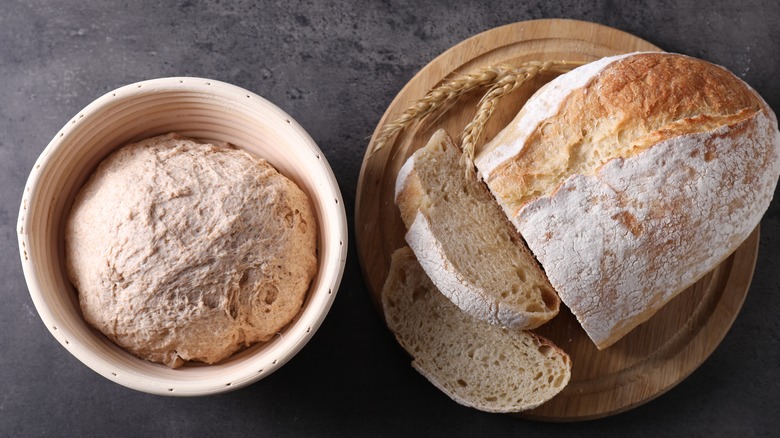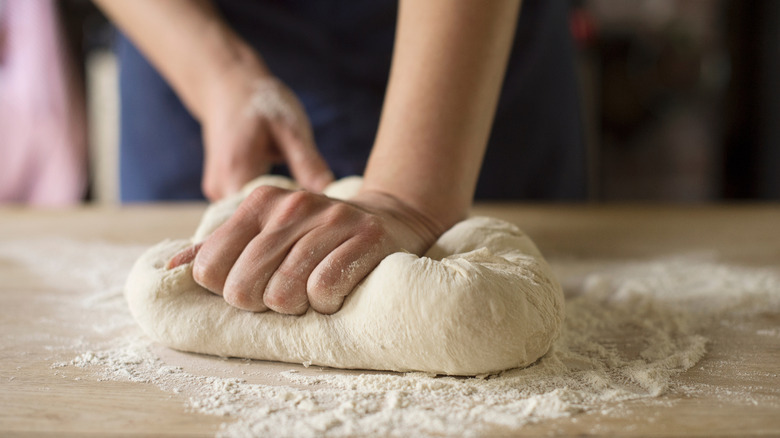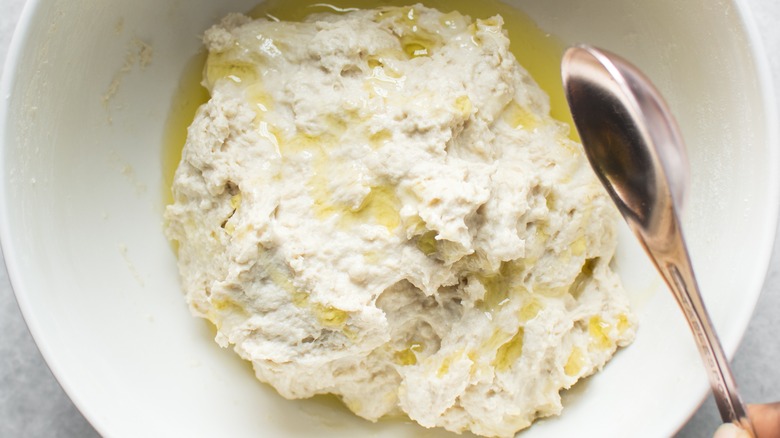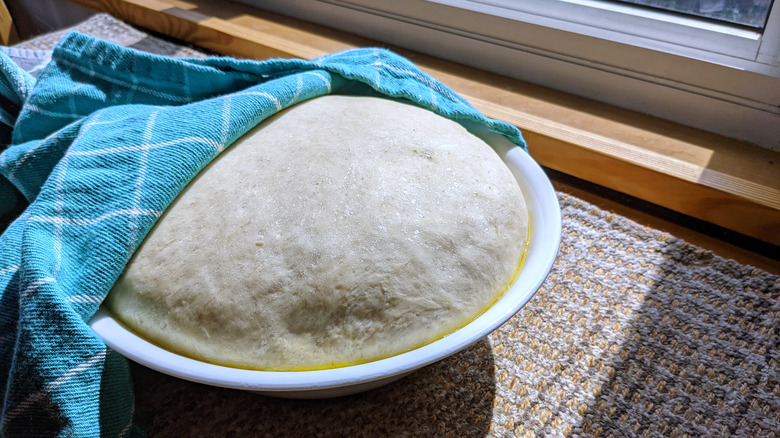Signs You're Overproofing Your Sourdough (& How To Fix It)
We may receive a commission on purchases made from links.
Baking a fresh, homemade batch of sourdough bread is always a good idea — if all goes according to plan, that is. From the daily feeding of your sourdough starter to proper sourdough scoring methods, baking this particular bread is a rather complex process. One common mistake that can completely derail your plans to enjoy a fresh loaf is accidentally overproofing your dough.
To confidently identify the signs of overproofed sourdough, Food Republic spoke with Hannah Dela Cruz, founder of the sourdough baking blog Make It Dough and author of "Sourdough Every Day," a comprehensive guide to using active and discard starters in a variety of baked goods. According to Dela Cruz, overproofing occurs when dough is left to rise for too long, especially in a warm environment
"When dough overproofs, the yeast has consumed all available nutrients, and the dough becomes overly acidic, weakening the gluten structure," she told Food Republic. "As a result, it tears easily, loses its structure and becomes flat due to its inability to trap [carbon dioxide]."
While this can be disheartening, it doesn't necessarily mean you have to toss everything and start over. In addition to identifying when dough is overproofed, Dela Cruz shared tips for fixing overproofed dough and preventing the mishap during the initial proofing process.
Try reforming your dough to revive its texture
Typically, it is recommended that you knead your bread dough before it rises, and avoid excessive handling after it has proofed. However, if you've accidentally left your sourdough bread to proof for a little too long, it may benefit from a thorough massage. "You can try to flatten the dough out to redistribute the nutrients for the yeast, reform it into the shape you want[,] and attempt to salvage your loaf," Hannah Dela Cruz advised.
This method works best for slightly overproofed dough, but it is not a perfect fix. Dela Cruz warned that if the dough has already become too acidic, reshaping it may not be enough to save its texture. If it's been proofing for too long, you may need to move on to Plan B.
Olive oil can breathe new life into your overproofed dough
Overproofed sourdough often results in a gummy, rubbery loaf if you attempt to bake it as is. But there are other ways to repurpose the dough into different baked goods.
Hannah Dela Cruz suggested kneading approximately two tablespoons of olive oil into overproofed dough to transform it into olive oil crackers. "[Roll the dough] out as flat as you can get it and [bake] it at 450 [degrees Fahrenheit] for 10 minutes to make olive oil crackers," she explained. "You can sprinkle sesame seeds and flaky sea salt on top." It may not be the fresh loaf you originally intended, but this tasty, flavorful alternative is the next best thing — and prevents waste.
Temperature may be the key to avoiding overproofed dough
Overproofing can happen quickly if your dough gets too warm, even after a relatively short rise. While you don't need many fancy proofing tools, sourdough expert Hannah Dela Cruz does recommend one key item to help prevent overproofing. "You can use an instant read thermometer to ensure your dough temperature stays in the 75 to 78 Fahrenheit range [to help] regulate fermentation," she advised.
If you need to step away while your dough is proofing, consider storing it in the fridge. The cooler temperature will slow the process, buying you a bit more time before it turns into an overproofed, sticky headache.




